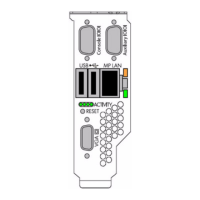4–7 HP Integrity Network Adapter Teaming Configuration and Deployment
with Integrity Essentials Rapid Deployment Pack (RDP)
One of the methods of deployment for HP Integrity Network Adapter Teaming is to use HP
Integrity Essential’s Rapid Deployment Pack (RDP) remote scripting feature. This feature allows
an SA to deploy a specific teaming configuration to any number of target servers in a single
action. RDP is a server deployment solution that facilitates the installation, configuration, and
deployment of high-volumes of servers through either a GUI-based or a web-based console,
using either scripting or imaging technology. For additional information on RDP, refer to http://
h18004.www1.hp.com/products/servers/management/rdp.html.
Example steps for HP Integrity Network Adapter Teaming deployment using RDP:
1. Create the desired team on one server manually. When satisfied with the teaming
configuration, click the Save button in the NCU tool and save the file as hpteam.xml to a
location on the RDP server.
2. Create a new job in the RDP console called “NIC Teaming Job”.
3. Edit the job properties and include a copy file task that copies the latest NCU (for example,
cp123456.exe) to the target server’s %windir%\temp folder (if you do not need to upgrade
the NCU tool, you may omit this step).
4. Add an additional copy file task that copies the Hpteam.xml file (from Step 1) to the same
location on the server as the NCU tool copied in Step 3.
5. If needed, add a Run Script task that executes the NCU installer (for
example:%windir%\temp\cp123456.exe /s)
6. Add an additional Run Script task that executes the teaming CLI tool and uses the
HPteam.xml configuration file (for example:c:\windows\system32\cqniccmd.exe
/c %windir%\temp\hpteam.xml).
7. Test the new job on a target server with no teaming installed to ensure the desired result.
NOTE: If any of the target servers already have a team in place and your intention is to overwrite
that team, consider the cqniccmd.exe /d parameter to delete existing teams. Note that in
doing so, your target may lose the connection to the RDP server and may be unable to complete
the job. This can be reconciled by putting all of the above scripts into one batch file that is sent
to the server via the RDP console and then told to execute locally. Lastly, if your network does
not use DHCP on the subnet where the team is created, you will lose access to the target server
once the new team is created. You can overcome this by using netsh.exe included with Windows
Server 2008.
86 The Mechanics of Teaming for the Advanced User
